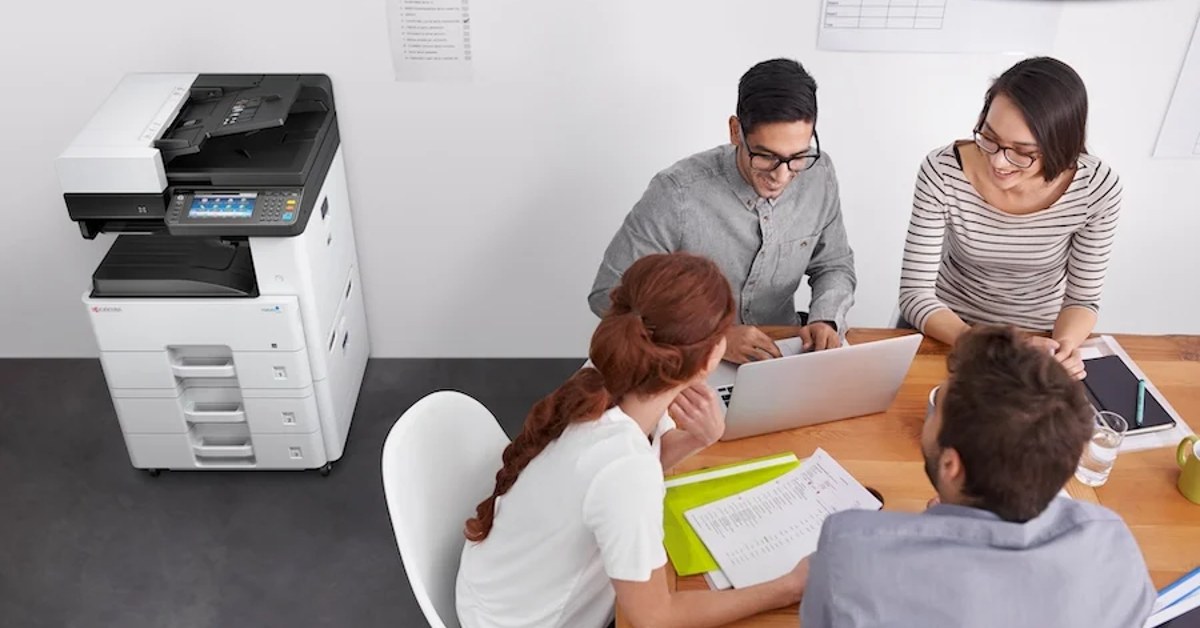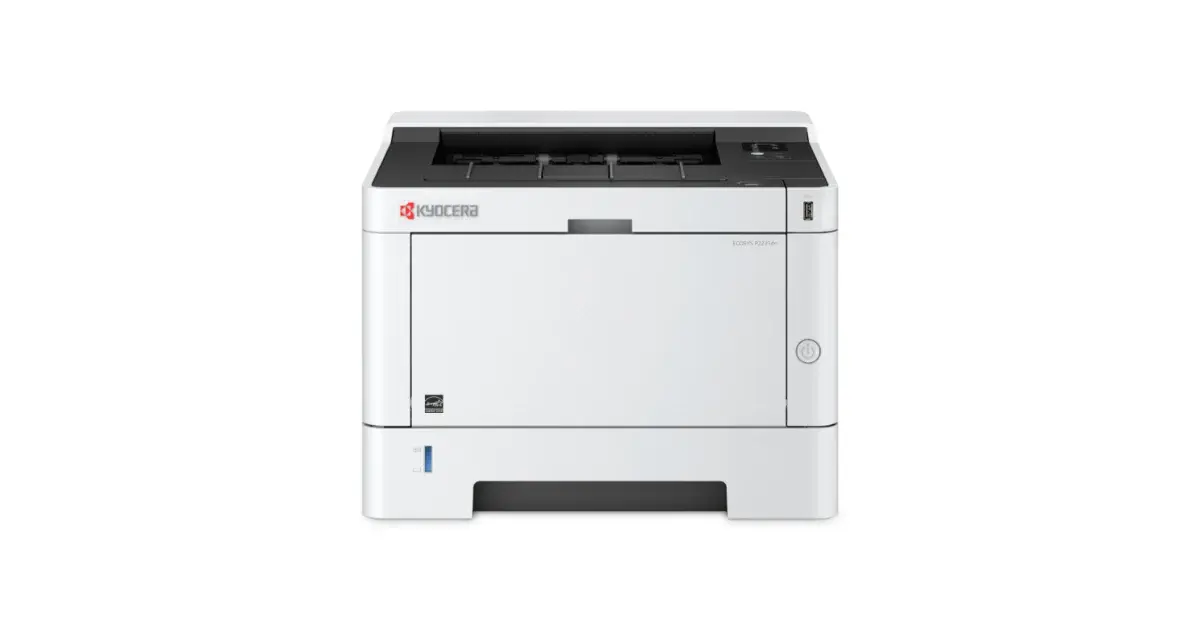2 min read
Mitigating printer security risks in the digital age
In a new age of digital threats, it can be easy to forget one of the essential devices of the modern workplace: the printer. Printer security risks...
Benefit from smart ideas, lower costs, greater productivity. Choose from award-winning printers, software solutions and consumables
Personalised technology solutions to help your organisation gain a competitive advantage
Cloud Powered SolutionsWe combine professional expertise with a human kind of partnership
Get the right help and advice, register a product and see why our commitment to you matters.
Discover our brand, our global activities and commitments
4 min read
Peter Georghiou 27/06/2019 1:06:00 PM

The average office worker uses about 10,000 sheets of paper every year. We can safely assume that the majority of that paper starts inside the office printer.
But how can you make sure that you’re using the best business printer for your needs? There are a variety of options available, and you could end up paying more for features your company doesn’t need.
To start your investigation, you’ll need to understand the specifics of what is being printed at your office. This also includes how much is being printed, whether you need extra features and the ongoing cost of consumables, such as printer toner.
Choosing the best business printer can be quick and easy. With a bit of help from us and your evaluation, we'll quickly figure out the best printer for your office.
Don't make the mistake of delving into a catalogue or online store before you answer some simple questions. You may be able to answer these questions yourself, or you may need to talk to a range of people in your workplace to find answers that accurately reflect the office's needs.
It’s important to consider your primary business function and how the printer supports that service.
If you work in an architectural office, you'll probably be looking at large-format and 3D printers. Alternatively, maybe you manage a small graphic design business? Then you’ll want accurate colour printing for reviewing print designs. This step can immediately remove a variety of printer options from the list, as they will not be suitable.
Think about how your organisation may grow and change in the future and how this might affect your printing needs. Decide whether the new machine you are researching now needs to meet these requirements, or if you'll upgrade in the future.
Once you've got clear answers to these first two questions, it will be easier to decide on what features your new printer needs to have and how much you’re prepared to spend.
If your printing needs analysis has shown that your office requires a machine that scans or faxes, a multifunction device might be a suitable option. Multifunction printers come in laser models and can include either a flatbed or a sheetfed scanner (good for high-volume document scanning). Most models will also include a fax feature.
A multifunction printer with a scanner is an excellent choice if you need to scan signed agreements, photographs, handwritten notes, or if you have any photocopying needs.
Generally, printers will easily handle paper up to A4 size. If you need to print at A3, check the printer's specifications. Also, consider whether you need to print on thicker (higher gsm) paper, labels, or envelopes, and whether you require additional add-on modules for different paper-handling requirements.
In a busy office that prints in high volume, no one has time to top up the printer's paper supply continually, so look for a machine with the appropriate paper-handling capacity.
Double-sided or duplex printing is a helpful printer feature that can save your office time and money. Duplex printing can save your office between 30% and 50% on paper costs and reduce storage needs. Look for a model that supports automatic duplex printing, as manual double-sided printing can be onerous and time-consuming. Duplex printing can also reduce costs by using less paper.
The best way to compare printers' speeds, resolutions and colour claims is to delve into the specifications. A good printer provider's website will let you compare specifications side by side, making it as easy as possible to get a clear overview. Here you will also be able to check details such as security features, warranty information, and print-out time.
Be on the lookout for printers certified to international standards, such as ISO 9001 for quality and ISO 14001 for environmental management. The best business printers are also likely to have won awards for reliable design or for environmental friendliness.
Network- or mobile-friendly printers are connected to a group of computers at the same time. This connection no longer needs to be physical; the printers could be connected wirelessly (think printing straight from a mobile phone!). A networked printer is the best option for efficiently meeting the needs of multiple employees in an office.
A drawback of a network printer is that multiple users trying to access it at once can delay printing. It might be worth considering multiple printers if your office has a high printing volume.
Buying a business printer isn't a one-off cost; you will also need to consider the ongoing expenses of toner, paper and servicing. Remember, it might be worth buying a more expensive printer that better fits your needs, even if it has higher upfront costs, since it will have lower ongoing costs.
Consider a printer technology that incorporates long-life consumables and has one of the lowest costs per print, for the best value for money.
Printer manufacturers have made great strides in reducing the electricity consumption of their products.
Kyocera printers feature optimal power control and are designed to conserve power during standby, low-power, and sleep modes. Kyocera’s ECOSYS printers provide a printing solution that incorporates long-life consumables, meaning less waste is sent to landfill.
A managed print services (MPS) program is the ideal solution for businesses that routinely rely on printing and have widespread printing needs. Some MPS providers take a more dynamic role, rather than solely delivering consumables and organising repairs or replacements when faults occur. A good MPS provider may also proactively monitor your printing to progressively manage the machines installed in your business, resulting in a more efficient and economical print environment.
Printing is typically the third-highest business expense after rent and payroll, but it's often overlooked or calculated using only the sticker price. Download our Guide to Calculating Total Printing Costs to learn how to correctly assess your device's total cost of ownership and avoid unnecessary expenses.
KYOCERA Document Solutions provides document management solutions that improve document cost control and security, while delivering greater productivity, reliability and uptime.

2 min read
In a new age of digital threats, it can be easy to forget one of the essential devices of the modern workplace: the printer. Printer security risks...

2 min read
Without a doubt, the COVID-19 pandemic has ousted the traditional office setup from its chief status as "the way we work". More than ever before,...

2 min read
Efficient businesses are always looking at ways to improve their bottom line without sacrificing quality or output. Right? And while big item costs...